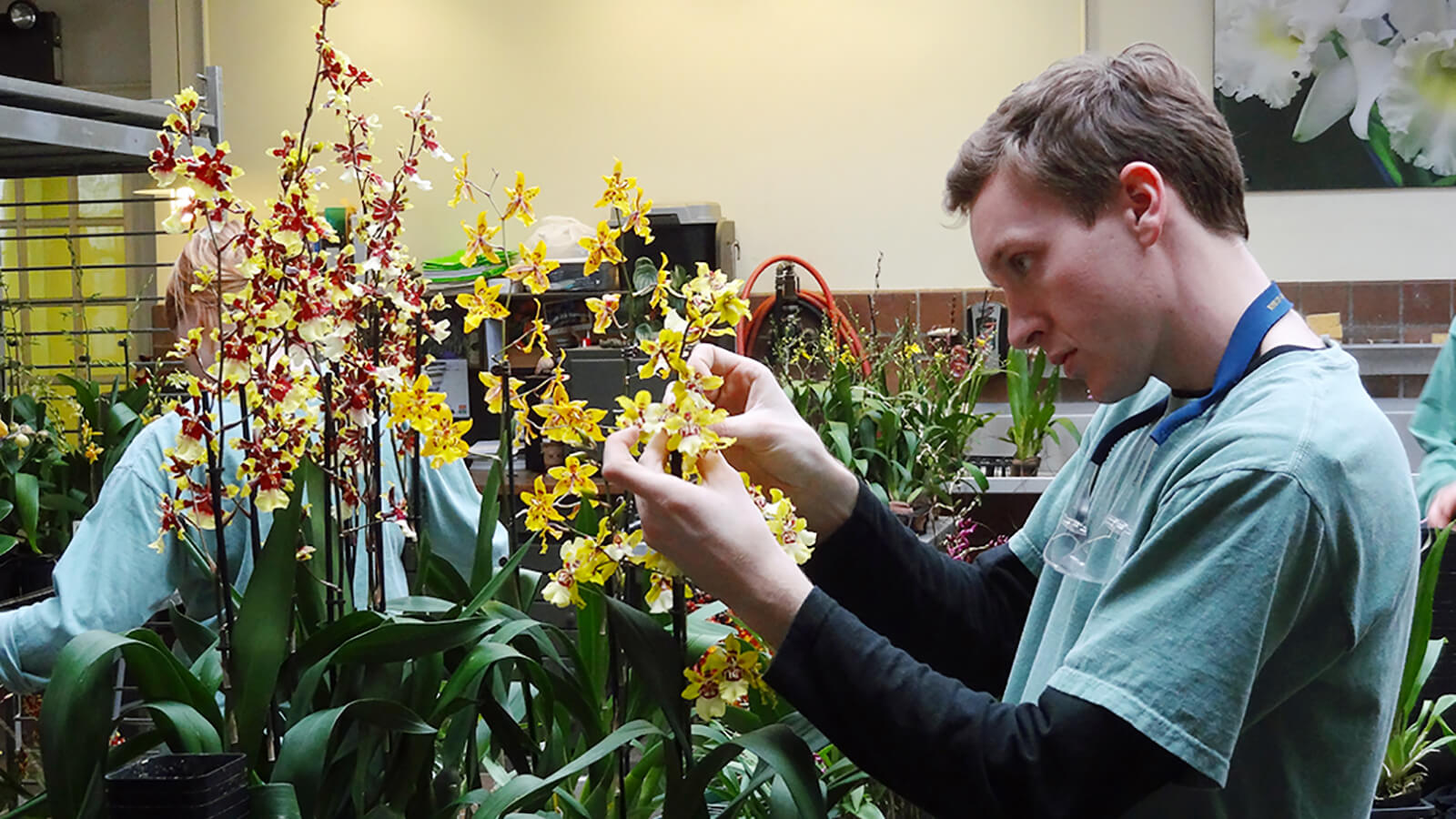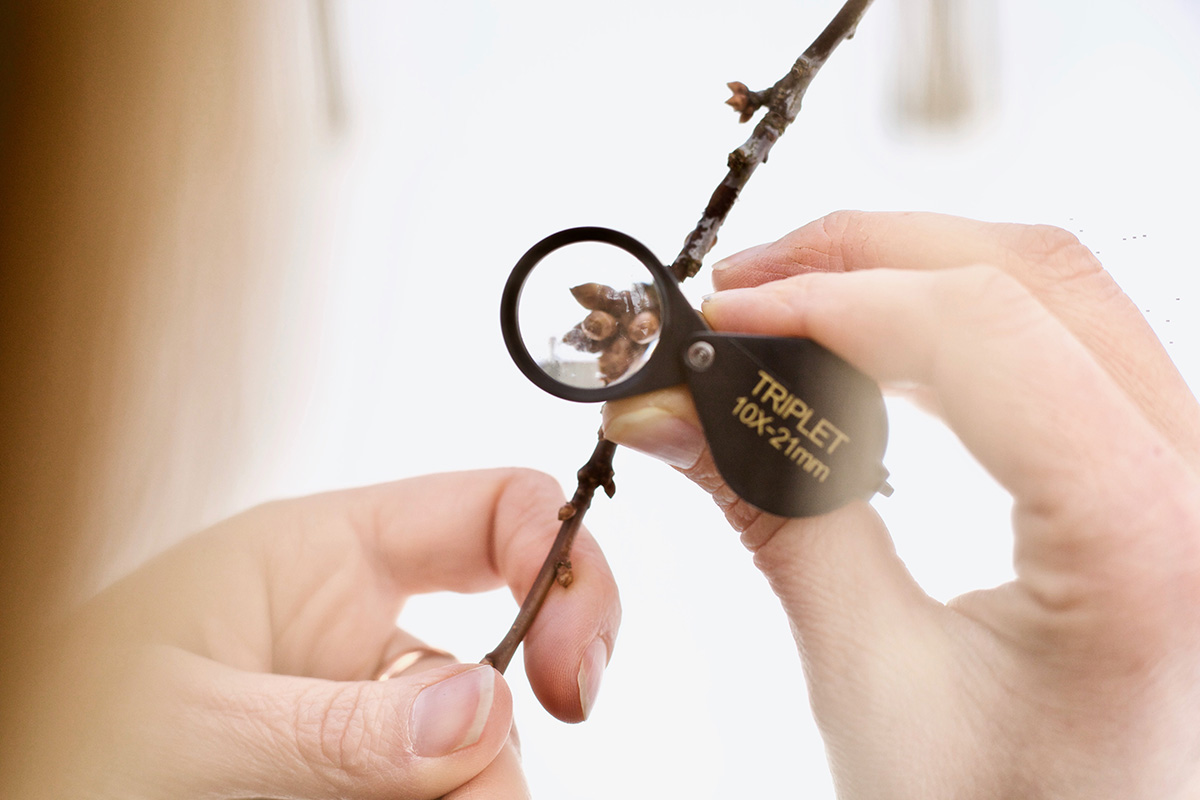Home>Gardening Basics>What Is Forensic Botany


Gardening Basics
What Is Forensic Botany
Modified: January 22, 2024
Learn the basics of forensic botany and get started in this fascinating field. Discover how plants can provide crucial evidence in criminal investigations.
(Many of the links in this article redirect to a specific reviewed product. Your purchase of these products through affiliate links helps to generate commission for Chicagolandgardening.com, at no extra cost. Learn more)
Table of Contents
Introduction
Welcome to the fascinating world of forensic botany! In criminal investigations, forensic science plays a crucial role in gathering evidence and solving cases. While most people are familiar with forensic disciplines such as forensic anthropology and DNA analysis, fewer are aware of the lesser-known but equally important field of forensic botany.
Forensic botany is the application of plant science in legal cases to assist in determining the cause of death, identifying suspects, establishing the location of a crime, or linking physical evidence to a crime scene. The field encompasses various aspects of plant biology, including plant morphology, ecology, anatomy, and physiology, to aid in criminal investigations.
Although forensic botany is a relatively new discipline, the use of plant evidence in criminal investigations has a long history. Ancient civilizations, such as the Egyptians and the Romans, understood the role of plant materials in solving crimes. They used plant-based substances, such as poisons and healing plants, as evidence in legal proceedings.
Modern forensic botany as a distinct field emerged in the late 19th century, with the pioneering work of Dr. Arthur Conan Doyle, an English physician and botanist. His studies on the adulteration of food and the identification of plant fibers revolutionized the use of plant evidence in forensic investigations.
Today, forensic botany continues to play a crucial role in criminal investigations. By providing valuable insights into plant biology, ecology, and geographic distribution, forensic botanists can assist law enforcement agencies in establishing a timeline of events, determining the location of a crime, and linking suspects to a particular crime scene.
This article will delve into the various aspects of forensic botany and shed light on its techniques, methodologies, and real-life case studies. We will explore the limitations and challenges faced in this field and discuss the future developments that may shape the future of forensic botany. So, grab a magnifying glass and join us on this journey into the world of forensic botany!
Definition of Forensic Botany
Forensic botany can be defined as the application of plant science in criminal investigations to provide valuable insights and evidence. It involves the collection, analysis, and interpretation of plant-related evidence found at crime scenes.
Plants, being an essential part of the environment, interact with their surroundings and leave traces that can be used to understand various aspects of a crime. These traces may include plant fragments, pollen grains, seeds, plant fibers, plant toxins, or even the presence of particular plant species.
Forensic botany encompasses a range of subfields, including palynology (the study of pollen and spores), dendrochronology (the study of tree rings), plant anatomy, plant ecology, and plant physiology. Each of these subfields contributes to the broader understanding of a crime scene by providing valuable information about plant species present, environmental conditions, timing, and geographical origins.
One of the primary objectives of forensic botany is to determine the time since death, also known as postmortem interval (PMI). By analyzing changes in plant growth, decomposition, and succession, forensic botanists can estimate how long a body has been at a crime scene. This information is crucial in narrowing down the window of time in which a crime may have occurred and helps investigators prioritize potential suspects.
Another important aspect of forensic botany is the analysis of plant-related evidence to establish the geographic origin of a crime scene or the movement of suspects. This involves identifying unique plant species or specific combinations of plant species that are characteristic of certain regions. By analyzing the plant material found on suspects or in their belongings, forensic botanists can provide valuable insights into their recent travel history or association with a particular crime scene.
Forensic botany is not limited to outdoor crime scenes. It can also be applied indoors, where plants or plant-based products may be involved in incidents such as poisonings or arson cases. In these situations, forensic botanists can analyze plant toxins or residues to determine the presence of hazards substances and provide evidence for legal proceedings.
In summary, forensic botany is a multidisciplinary field that utilizes plant science to assist in criminal investigations. By studying various aspects of plants, including their morphology, ecology, anatomy, and physiology, forensic botanists play a crucial role in identifying suspects, establishing timelines, determining geographic origins, and providing key evidence in the pursuit of justice.
Historical Overview
The use of plant evidence in criminal investigations dates back centuries, with ancient civilizations recognizing the value of plants in solving crimes. The Egyptians, for instance, used plant-based substances such as opium and belladonna as evidence in legal proceedings. Similarly, the Romans employed plants in their investigations, using them to determine the causes of suspicious deaths or poisonings.
However, it wasn’t until the late 19th century that forensic botany began to emerge as a distinct field. Dr. Arthur Conan Doyle, renowned for his creation of the fictional detective Sherlock Holmes, played a pivotal role in the development of forensic botany. Doyle, who was a physician and botanist, conducted extensive studies on the identification of plant fibers and their use as evidence in criminal investigations.
Doyle’s work paved the way for the recognition of forensic botany as a legitimate field, and subsequent advancements further solidified its importance. In the early 20th century, forensic botanists began to utilize pollen analysis, known as palynology, to link suspects or victims to specific crime scenes. By comparing pollen samples collected from a suspect’s clothing, belongings, or scene of the crime to those found in the surrounding environment, investigators could establish connections and strengthen their case.
Over time, forensic botany continued to evolve and thrive. Advances in DNA analysis techniques expanded the capabilities of forensic botanists, enabling them to identify specific plant species from small or degraded samples. This breakthrough revolutionized the field, as it provided even more precise evidence and opened up new possibilities for solving crimes.
In recent decades, the field of forensic botany has benefitted from technological advancements and collaboration with other forensic disciplines. The use of Geographic Information Systems (GIS) enables forensic botanists to map and analyze plant distributions, aiding in determining the geographic origins of plant material found at a crime scene or on suspects.
Moreover, the integration of forensic botany with other disciplines, such as entomology (the study of insects) and anthropology, has enhanced the capabilities of investigators. By studying the interaction between plants, insects, and human remains, forensic scientists can create a more comprehensive picture of the crime, including the timing of events and the postmortem interval.
Overall, the historical development of forensic botany highlights the importance of plant evidence in criminal investigations. From the ancient civilizations to the modern era, forensic botany has continually evolved, incorporating new techniques and technologies to provide valuable insights into the world of crime. Today, forensic botany stands as a vital and respected discipline, contributing to the pursuit of justice in countless criminal cases.
Role of Forensic Botany in Criminal Investigations
Forensic botany plays a critical role in criminal investigations by providing valuable insights and evidence through the analysis of plants and plant-related materials. It offers unique capabilities that can aid law enforcement agencies in solving crimes and establishing the truth. Here are some key roles of forensic botany in criminal investigations:
- Scene Investigation: Forensic botanists assist in crime scene investigations by identifying and documenting plant evidence. They carefully collect and analyze plant samples, such as leaves, seeds, or pollen, to determine their relevance to the case. This evidence can help establish the location of a crime, link suspects to the scene, or provide insights into the timeline of events.
- Evidence Analysis: Plant material found on suspects, victims, or at crime scenes can provide crucial evidence. Forensic botanists analyze this material using various techniques, including microscopy, DNA analysis, and chemical testing. Through these analyses, they can identify specific plant species, determine their geographic origin, and link them to individuals or locations of interest.
- Time of Death Estimation: The study of plant growth and succession is essential in estimating the time since death, also known as the postmortem interval (PMI). Forensic botanists examine the stage of plant development and the presence or absence of specific plant species to determine how long a body has been at a crime scene. This information can help investigators narrow down the time window for the occurrence of a crime.
- Geographic Profiling: By analyzing the presence and distribution of specific plant species, forensic botanists can provide insights into the geographic origin or movement of suspects or victims. Plant species have unique characteristics depending on their environment, and understanding these patterns can help investigators narrow down possible locations or track the movements of individuals related to a crime.
- Plant Toxins and Poisons: Forensic botanists can analyze plant toxins and poisons to determine if they have been used in criminal activities, such as poisoning or intoxication. By identifying toxic plant species or specific compounds within plant material, they can provide crucial evidence in cases related to poisoning, illicit drug use, or even plant-based homicides.
- Case Reconstruction: Forensic botany aids in reconstructing the events surrounding a crime by analyzing plant evidence and its interaction with other elements of the crime scene. Factors such as plant growth, decomposition, or the presence of insect activity on plants can help create a detailed timeline and understanding of how events unfolded.
Overall, forensic botany contributes significantly to criminal investigations by utilizing plant-related evidence to establish connections, unravel mysteries, and provide critical information. By integrating the knowledge of plant biology, ecology, and geography, forensic botanists play a vital role in the pursuit of justice.
Techniques and Methods Used in Forensic Botany
Forensic botany relies on a variety of techniques and methods to analyze plant-related evidence and provide valuable insights in criminal investigations. These techniques encompass various aspects of plant biology, ecology, anatomy, and chemistry. Here are some of the key techniques and methods used in forensic botany:
- Microscopy: Microscopic analysis is a fundamental technique in forensic botany. Forensic botanists use light microscopy and electron microscopy to examine plant fragments, pollen grains, seeds, or plant fibers. This allows for the identification and characterization of plant materials present at crime scenes or on suspects.
- Palynology: Palynology is the study of pollen and spores. Palynologists analyze pollen samples collected from crime scenes, suspects, or victims to establish links between individuals and specific locations. By comparing the pollen composition and distribution, forensic botanists can provide insights into the geographic origin of suspects or the movement of individuals related to the crime.
- DNA Analysis: DNA analysis has revolutionized forensic botany by providing a powerful tool for identifying plant species from small or degraded samples. Forensic botanists can extract and analyze DNA from plant materials to accurately identify specific species or confirm the presence of particular genetic markers. This technique helps establish the botanical evidence’s significance and provide valuable information for criminal investigations.
- Chemical Testing: Chemical testing is used to analyze plant toxins and poisons that may be relevant to a crime. Forensic botanists can detect and identify specific compounds in plant materials that may have harmful effects on humans or animals. Chemical testing plays a crucial role in cases involving plant-based poisoning, intoxication, or the use of illicit drugs.
- Dendrochronology: Dendrochronology involves the study of tree rings to establish the age of trees and their growth patterns. Forensic botanists can use dendrochronology to analyze wooden materials found at crime scenes or on suspects. By matching the growth patterns of tree rings, they can determine the origin of the wood, linking suspects to specific locations or identifying the source of a weapon.
- Geographic Information Systems (GIS): GIS technology is utilized to map and analyze the distribution of plant species. Forensic botanists can input data on plant species, environmental factors, and crime scene locations into GIS software, helping determine the geographical origin of plant materials or track the movement of suspects. This technique aids in creating visual representations of spatial relationships, assisting investigators in narrowing down possible locations or routes.
These are just a few of the many techniques and methods used in forensic botany. It is crucial for forensic botanists to stay updated on advancements in scientific techniques and technologies to enhance their capabilities in analyzing and interpreting plant evidence. The integration of multiple techniques and collaboration with other forensic disciplines further strengthen the reliability and robustness of forensic botany in criminal investigations.
Case Studies and Examples
Forensic botany has played a significant role in various criminal investigations, providing crucial evidence and helping to solve complex cases. Here are a few notable case studies and examples that highlight the application of forensic botany:
- The Murder of Dr. Linda Gail Archer: In 1983, Dr. Linda Gail Archer, a plant physiologist, was murdered in her home. Forensic botany played a pivotal role in the investigation when plant fragments were found on the suspect’s clothing. By analyzing the fragments and comparing them to the plants in the victim’s home, forensic botanists were able to establish a direct link between the suspect and the crime scene, contributing to his conviction.
- Plant DNA Profiling in a Homicide Case: In a homicide investigation, forensic botanists examined plant material found on a suspect’s shoes. By conducting DNA profiling of the plant material, they were able to link the suspect to the crime scene, where the same plant species was present. This evidence played a crucial role in the conviction of the suspect.
- Geographic Origin Determination: In cases involving the illegal importation of plants or plant products, forensic botany can help determine the geographic origin of the material. By analyzing the DNA or chemical composition of the plant material, forensic botanists can trace the source of the plants and identify the regions involved in illegal activities.
- Linking Suspects to a Crime Scene: Forensic botanists can provide valuable insights by linking suspects to a crime scene through analysis of plant evidence. For example, analyzing plant fibers found on a suspect’s clothing and comparing them to the plants at the crime scene can establish a connection between the suspect and the location of the crime.
- Postmortem Interval Estimation: In cases where the time of death is uncertain, forensic botanists can assist in estimating the postmortem interval (PMI) by studying the plant growth and decomposition at a crime scene. By examining the stage of plant development and the presence of specific plant species, they can provide valuable information in narrowing down the time frame for a crime.
These case studies demonstrate the diverse ways in which forensic botany has been applied successfully in criminal investigations. By utilizing plant DNA analysis, microscopy, palynology, and other techniques, forensic botanists have provided critical evidence that has helped identify suspects, establish connections, and contribute to the pursuit of justice.
Limitations and Challenges in Forensic Botany
While forensic botany is a valuable discipline in criminal investigations, it faces certain limitations and challenges that can affect the interpretation and application of plant-related evidence. Understanding and addressing these limitations is crucial for maintaining the reliability and integrity of forensic botany. Here are some of the key limitations and challenges faced in this field:
- Limited Plant Database: The accuracy and reliability of plant identification in forensic botany depend on a comprehensive and up-to-date plant database. However, the availability of a standardized database that covers all plant species and their characteristics is still a challenge. This limitation can affect the accuracy of plant identifications and the interpretation of results.
- Plant Variability: Plant variability within species can pose challenges in forensic botany. Different factors, such as environmental conditions and genetic variations, can lead to variations in plant characteristics, including morphology, pollen morphology, and chemical composition. The interpretation of these variations requires extensive knowledge and expertise.
- Plant Contamination: Contamination of plant material can occur during collection, transportation, and storage, which can affect the reliability of forensic botany evidence. Cross-contamination from other crime scenes, handling by individuals with contaminated clothing, or improper storage practices can compromise the accuracy and integrity of plant evidence.
- Limited Forensic Botany Specialists: The availability of trained forensic botanists is limited, and their expertise may not be widely accessible in all jurisdictions. This can lead to delays in analyzing plant evidence, potential misinterpretations, or the lack of resources to handle complex forensic botany cases.
- Lack of Standardized Protocols: The lack of standardized protocols and procedures in forensic botany can pose challenges in ensuring consistency and reliability across different laboratories and experts. Standardization efforts are ongoing, but variations in methodologies can affect the comparability and reproducibility of results.
- Interpretation Challenges: Interpreting plant evidence in the context of a crime scene can be challenging. Factors such as plant growth rates, environmental conditions, and the interactions between plants, insects, and human remains can complicate the interpretation process. It requires a multidisciplinary approach and collaboration with other forensic disciplines such as entomology and anthropology.
Awareness of these limitations and challenges is vital to ensure the accurate interpretation and application of plant-related evidence in forensic investigations. Ongoing research, training, and collaboration with other forensic disciplines can help address these challenges and further enhance the capabilities of forensic botany in the pursuit of justice.
Future Developments in Forensic Botany
The field of forensic botany is continuously evolving, and ongoing advancements in scientific research and technology offer promising prospects for its future development. Here are some key areas that are likely to shape the future of forensic botany:
- Advancements in DNA Analysis: As DNA analysis techniques continue to improve, forensic botany will benefit from increased sensitivity, faster turnaround times, and the ability to analyze smaller or degraded plant samples. This will enhance the accuracy and reliability of plant species identification and strengthen the use of DNA evidence in criminal investigations.
- Improved Plant Databases: The development of comprehensive and standardized plant databases will play a crucial role in the future of forensic botany. These databases will include detailed information on plant characteristics, distribution patterns, and genetic variations, allowing for more accurate and efficient plant identifications.
- Integration of High-Resolution Imaging Techniques: High-resolution imaging techniques, such as scanning electron microscopy and confocal microscopy, hold promise for the analysis of plant evidence in forensic botany. These techniques can provide detailed visualization of plant structures, allowing for more precise identification and characterization of plant material.
- Application of Stable Isotope Analysis: Stable isotope analysis can provide insights into the geographic origin of plants and plant-related evidence. By analyzing stable isotopes within plant material, forensic botanists can determine the environmental conditions in which the plant grew and help link suspects to specific locations or trace the movement of plant materials.
- Data Integration and GIS: The integration of various data sources, including plant distribution data, climate data, and crime scene information, with Geographic Information Systems (GIS), will enhance the capabilities of forensic botany. This will facilitate the spatial analysis of plant evidence, enabling more accurate determination of the geographic origins of plant materials and providing valuable insights into crime scene reconstruction.
- Advances in Plant Toxin Analysis: Plant toxin analysis will continue to advance, allowing forensic botanists to identify and quantify toxic compounds in plant materials more accurately. This will be valuable in cases involving plant-based poisoning, illicit drug use, and the determination of cause of death.
As forensic botany continues to evolve and adapt to new technologies and research, it holds great potential for improving the analysis and interpretation of plant-related evidence in criminal investigations. The integration of multiple techniques, collaboration between different forensic disciplines, and further standardization efforts will contribute to the advancement of this field, ultimately aiding in the pursuit of justice.
Conclusion
Forensic botany is a fascinating and valuable field that harnesses the power of plant science in criminal investigations. Through the analysis of plant-related evidence, forensic botanists provide critical insights into crime scenes, link suspects to specific locations, establish timelines, and contribute to the pursuit of justice. This multidisciplinary discipline integrates various techniques, including microscopy, DNA analysis, palynology, and chemical testing, to examine plant materials and provide accurate and reliable evidence.
Although forensic botany faces certain limitations and challenges, such as limited plant databases and variations in plant characteristics, ongoing advancements in technology and research offer promising opportunities for future development. The improvement of DNA analysis techniques, the integration of high-resolution imaging, the application of stable isotope analysis, and the use of Geographic Information Systems (GIS) will enhance the capabilities of forensic botany and strengthen its value in criminal investigations.
Forensic botany has already played a significant role in numerous cases, providing crucial evidence that has helped identify suspects, establish connections, and reconstruct crime scenes. Real-life examples, such as the use of plant DNA profiling and geographic origin determination, demonstrate the impact and importance of forensic botany in solving complex criminal cases.
As forensic botanists continue to work collaboratively with other forensic disciplines, expand plant databases, and refine methodologies, the field will become more robust and reliable. By addressing limitations, improving techniques, and staying at the forefront of scientific advancements, forensic botany will continue to evolve and make significant contributions to the field of forensic science.
In conclusion, forensic botany is a vital discipline that leverages the power of plants to uncover the truth in criminal investigations. Its ability to analyze and interpret plant-related evidence provides unique insights into crime scenes and assists in linking suspects to specific locations. With ongoing advancements and a commitment to innovation, forensic botany will remain at the forefront of forensic science, helping to bring justice to individuals and communities around the world.





